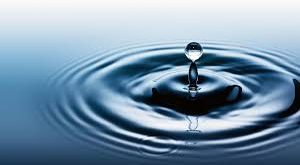Oceans are largely deep blue in color. However, if you have travelled a lot or follow nature channels, you would have noticed that oceans are of different color at different places. Oceans could acquire various shades such as turquoise, light blue, azure, greenish-brown, light green, dark blue-black, greenish-white, and various other color shades. So, why do oceans have different colors at different places?
Well, the first thing we need to understand is that ocean water does not have any color. It is colorless, just like water should be. The color that a section of the ocean acquires is primarily due to three factors. These include the depth of the ocean, what is at the bottom, and the various teeny-weeny things mixed in the water. Here’s what’s really happening that gives oceans their distinctive shade.
Light scattering – Oceans appear blue at most places due to the law of light scattering. Sunlight is made up of light spectrum of different wavelengths. To the human eye, the longer wavelengths are interpreted as orange, red, etc. The shorter wavelengths are interpreted as green or blue. When sunlight strikes oceans, the longer wavelengths are absorbed more readily. On the other hand, shorter wavelengths get scattered more readily. This gives the usual blue color to the oceans.
Depth of ocean – The deeper the ocean, the darker it will appear to the human eye. This again is the phenomenon of light scattering as described above. For example, some of the deepest parts of the Atlantic have dusky dark blue color. Similarly, the sea at some tropical locations has a sapphire-like color shade.
What’s at the bottom – This is also an important factor in determining the color of the ocean. For example, in places where the bottom is comprised of white sand or white rocks, the ocean water appears to be of turquoise color. This happens when blue light is partly reflected back from the bottom to form the turquoise shade.
What’s in the water – Ocean water is full of microscopic particles and plants. The latter is referred to as phytoplankton, which can give a greenish appearance to the water. Depending on the volume of phytoplankton, the oceans can also get other shades such as brown, yellow or red. Another factor is places where rivers meet the oceans. This can also affect the color of the ocean, although it will be limited to a small section of the ocean.
A combination of above factors can create a myriad of colors for the ocean. At least that’s how our brain interprets it even though the ocean water may be largely colorless at most places.
 Newspatrolling.com News cum Content Syndication Portal Online
Newspatrolling.com News cum Content Syndication Portal Online







